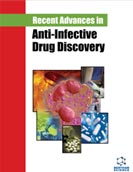Abstract
Traditional knowledge of clinical, laboratorial, and endoscopic orders regarding ulcerative colitis and Crohns disease has begun to be implemented by the revolutionary data from genetic studies. Eversince many decades ago it has been clear that Inflammatory bowel diseases are complex multifactorial disorders wherein gut-confined and/or environmental factors must synergize with genetic components to effect the full-blown disorder. The sequencing of the human genome and the generation of public resources of single nucleotide polymorphisms permitted the conduction of powerful population based genome-wide association studies. The latter have increased the number of the identified susceptibility loci to 99. In this review we touched on two pathways that make true susceptibility genes for Inflammatory bowel diseases; gene loci that confer specific risk for ulcerative colitis and Crohns disease were discussed in detail.
Keywords: Crohn's disease, genome-wide association, inflammatory bowel disease, ulcerative colitis, Endoscopy, IBD Phenotypes, Saccharomyces Cerevisiae, Extracellular matrix protein 1, Anti-nuclear cytoplasmic antibodies, Pathogen associated molecular patterns
 10
10



















